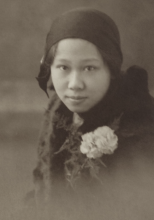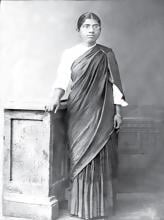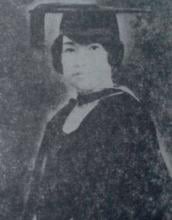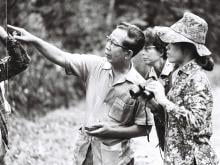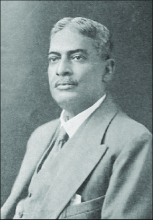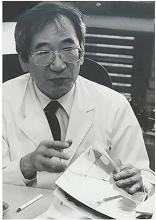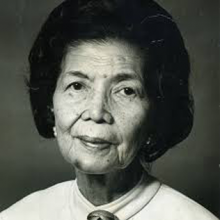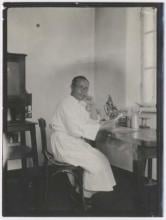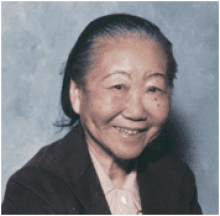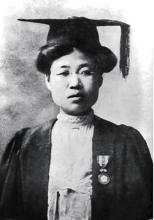Medicine
News

18 Jun 2008
In Nature China this week - Researchers in Shanghai identify ion channels in the brain that have a critical role in synaptic development, as well as learning and memory

15 Jun 2008
Summaries of papers include Resolving photon numbers, Microstructures stay on track, Muscle degeneration, Measuring glacial deep-water flow, The unexpected metal, Seafloor’s influence on biodiversity and Expressing fear enhances perception

11 Jun 2008
Summaries of newsworthy papers include Locating the comfort zone, We take more risks when potential pay-offs are well defined, Sequence of response, The carbene catchers, Anderson localization of matter waves and Leaf the temperature alone

11 Jun 2008
In a press release issued today, Keio University scientists have shown that pigeons are able to discriminate video images of themselves, paintings of certain painters (Van Gogh vs Chagall) and more. The video image discrimination ability is higher than 3-year-old children. (Pictures available)

11 Jun 2008
Keio University is giving 5 full scholarship awards to international students who wish to study in their Masters or Doctoral programs in 2009.
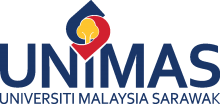
11 Jun 2008
Call for papers - Theme: Realisation of Biodiversity Potentials Through Applied Biology

11 Jun 2008
In Nature China this week - A skeleton found in Liaoning province provides a new insight into the evolution and migration of modern humans in East Asia and more research stories.
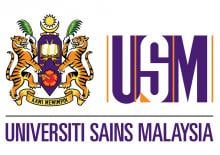
10 Jun 2008
Penang, Malaysia - In a press conference held today, University Science Malaysia scientists unveil their research into the healing properties of turmeric on skin tumours and wounds.

08 Jun 2008
Summaries of newsworthy papers include Neuroscience: Helping seizures with acidity, Medicine: A drug against blood cancer may also fight lupus and Immunology: Zipping to sites of infection

05 Jun 2008
This paper presents the findings of a study involving some common Ayurvedic medicines, which revealed the presence of heavy metals and synthetic steroids that were in some cases responsible for significant morbidity among those who consumed them.

05 Jun 2008
Sarawak, Malaysia - UNIMAS (University Malaysia Sarawak) is the only university in Malaysia that has been accepted by the Canadian IIQM as its Cooperating Site.

04 Jun 2008
Summaries of newsworthy papers include Cell discovery helps understanding of heart growth, Extreme UV and finally… When moons collide and collide and collide

04 Jun 2008
In Nature China this week - Experiments at the Beijing Spectrometer may have produced invisible particles that lie outside the Standard Model and more

01 Jun 2008
Newsworthy papers include Rare 'de novo' mutations contribute to schizophrenia risk, New prognostic marker for breast cancer, Cellular senescence and ageing, Fighting infection from an unlikely source, Vitamins on the move, Synthesis shuts down power, Warm and salty Cretaceous oceans, Multi-part bacterial sensor, Preventing amyloid formation

28 May 2008
Newsworthy papers include A cold snap explained, I think therefore I touch, The 'good', the 'bad' and the gut, Forced out and fighting it, An infrared ring round a neutron star, Diagnostics in the balance, The big thaw, Engineering surface features of titania crystals, Quantum phase transition in a quantum dot, Visual invisibles, Packing wrapped up

28 May 2008
The Gold medal winners were for L2 Lipase: A Thermostable Enzyme for Industrial Applications and Production of Palm-based Anti Obesity Functional Oil.

25 May 2008
Newsworthy papers include Nanoparticles need 'stripes' for cellular success, Genetic variants affect cancer risk in alcohol drinkers, Conducting without pressure, A critical factor for maintaining blood stem cells, Understanding cocaine craving, Genetic clue to 'clubbing', Searching for cancer's 'Achilles' heel', Observing virus birth

22 May 2008
Cancer of the nasopharynx has its highest incidence in South East Asia, and is more prevalent in the Chinese population. Past studies linked its development to genetic predisposition and herpesvirus infections. UNIMAS researchers in this on-going project have further discovered the involvement of genes not previously implicated.

21 May 2008
Summaries of newsworthy papers include Outburst marking the birth of a supernova, Molecular clues to appetite and drug addiction, Magma can directly produce earthquakes, A trick of light, Stem cells: Getting to grips with self-renewal, How a vaccine enhancer, Climate : Tracking extreme conditions and A Texan fossil astride the amphibian gap

21 May 2008
In Nature China this week - High wind may inhibit plant growth irrespective of rain availability. Other papers include Electrochemical DNA sensors: Turn on the signal, AIDS treatment: The winning count, Genetics: Productivity booster, Quantum entanglement: Six at a time, Gamma-ray burst: Dust sees the light

18 May 2008
A genome wide study from Japan and Korea suggests generic susceptibility to gastric cancer. Other newsworthy papers include Fewer Atlantic hurricanes under global warming, Genetic links between pigmentation and skin cancer, Towards a model for Huntingdon’s disease and Three-dimensional microscopy at nanoscale resolution

14 May 2008
Penang, Malaysia - The award carries a cash prize of USD100,000, a trophy and a certificate was first introduced in 2002 with the aim of promoting research and knowledge development, particularly in the field of science, amongst institutions in member countries of IDB.

14 May 2008
Summaries of newsworthy papers include Atmosphere: Message in a bubble, Climate change: Huge analysis shows warming is changing the world, Planetary science: Pole to pole and Materials: Practical polaritonics

14 May 2008
This week from Nature China - Clinical trials show that a new malaria vaccine is safe and effective in humans, and may one day help control malaria, Female Chinese jumping spiders prefer males that reflect ultraviolet-B rays and more.

11 May 2008
Nocturnal tree frogs living in China have been found to possess extraordinary vocal skills comparable to dolphins, elephants and humans. Summaries of other newsworthy papers include The origins of the modern tomato, Insight into devastating pregnancy condition, Targeting dormant leukaemia cells, Tracking plates in the subsurface & more

08 May 2008
Summaries of newsworthy papers include Climate: Atmospheric aerosol and sea temperature, The planets: Mysteries surrounding the ‘butterscotch’ planet’s equator and Predicting fish diversity patterns in river networks

07 May 2008
In Nature China this week - A study in Hong Kong shows that deaths related to air pollution are more likely in disadvantaged communities and more.

04 May 2008
Summaries of newsworthy papers include Evolution: New look at human family tree, Your number of fat cells stays constant in adulthood, Starting out on the road to maleness, Earth’s early magnetic field, Genetic susceptibility to obesity and Generating human autoimmune cells

30 Apr 2008
Summaries of newsworthy papers include Why we are all different, Decadal-scale climate prediction in the North Atlantic, Shadows and dust, Is our children learning?, Key factor for cell migration identified, Missing memristor is found, Understanding phase slips, Southern anomaly goes North and Testing out a photochemical compass

30 Apr 2008
In Nature China this week - Dyslexic readers of the English and Chinese languages have different brain abnormalities, Global warming may have caused the intensity of dust storms in the Gobi Desert to decrease and more
Researchers
Sorry, no researchers coming up for this topic.
- « first
- ‹ previous
- 1
- 2
- 3
- 4
Giants in history
Michiaki Takahashi (17 February 1928 – 16 December 2013) was a Japanese virologist who developed the first chickenpox vaccine.
Irene Ayako Uchida’s (8 April 1917 – 30 July 2013) strides to understand genetic diseases such as Down syndrome paved the way for early screening of chromosomal abnormalities in foetuses.
Baron Kitasato Shibasaburo (29 January 1856 – 13 June 1931) was a Japanese physician and bacteriologist whose work led to a new understanding of preventing and treating tetanus, diphtheria and anthrax.
Maggie Lim (5 January 1913 – November 1995) was a Singaporean physician who promoted family planning and expanded the access to clinics to improve the quality of life for mothers and children in Singapore’s early days.
By isolating soil microorganisms and studying the compounds they produce, Satoshi Omura (born 1935) discovered almost 500 organic compounds with unique properties that were produced by these microorganisms, including many new antibiotics.
The founder of the Adyar Cancer Institute in India, Muthulakshmi Reddy (30 July 1886 – 22 July 1968), fought to uplift women and girls from impoverished situations.
Chinese-American virologist and molecular biologist Flossie Wong-Staal (27 August 1946 – 8 July 2020) was the first scientist to clone HIV and determine the function of its genes.
Maharani Chakravorty (1937 – 2015) was one of India’s earliest molecular biologists whose research paved the way for advances in the treatment of bacterial and viral infections.
Archana Sharma (16 February 1932 - 14 January 2008) conducted research into plant and human genetics that expanded the understanding of both botany and human health. In relation to botany, she uncovered the means by which asexually-reproducing plants evolve into new species.
The first Thai woman to receive a degree in medicine, Margaret Lin Xavier (29 May 1898 – 6 December 1932), is best remembered for her compassion towards her less privileged patients.
In 1915, pathologist Katsusaburo Yamagiwa and his research assistant Koichi Ichikawa became the first to prove that chronic exposure to chemicals can cause cancer.
In 1915, Koichi Ichikawa along with pathologist Katsusaburo Yamagiwa became the first to prove that chronic exposure to chemicals can cause cancer.
Husband and wife team, Kimishige (3 December 1925 – 6 July 2018) and Teruko Ishizaka (28 September 1926 – 4 June 2019) discovered the antibody class Immunoglobulin E (IgE) that triggers allergic reactions. They also discovered that IgE antibodies attach to white blood cells, known as mast cells, releasing histamine, which causes allergic reactions.
Husband and wife team, Kimishige (3 December 1925 – 6 July 2018) and Teruko Ishizaka (28 September 1926 – 4 June 2019) discovered the antibody class Immunoglobulin E (IgE) that triggers allergic reactions. They also discovered that IgE antibodies attach to white blood cells, known as mast cells, releasing histamine, which causes allergic reactions.
Japanese chemist Takamine Jokichi (3 November 1854 – 22 July 1922) founded the Tokyo Artificial Fertilizer Company, where he isolated a starch-digesting enzyme (named takadiastase) from the fungus Aspergillus oryzae.
Ground-breaking cancer researcher Kamal Jayasing Ranadive (8 November 1917 – 11 April 2001) advanced the understanding of the causes of leukaemia, breast cancer and oesophageal cancer through the use of animal models. She was also among the first to recognise how susceptibility to cancer is linked to tumour-causing interactions between hormones and viruses.
The research of Filipino pharmaceutical chemist Luz Oliveros-Belardo (3 November 1906 – 12 December 1999) focussed on essential oils and other chemicals derived from native Philippine plants.
Thai physician and conservationist Boonsong Lekagul (1907 – 1992) made major contributions to the preservation of his country’s wildlife.
Indian scientist and physician Upendranath Brahmachari (19 December 1873–6 February 1946) is best known for creating a drug called Urea Stibamine, used to safely and reliably treat visceral leishmaniasis (or Kala-azar), a severe infection caused by the Leishmania parasite.
Filipino chemist and pharmacist Manuel A. Zamora (29 March 1870 – 9 July 1929) is best remembered for his discovery of the tiki-tiki formula to combat beriberi, a disease caused by Vitamin B1 deficiency.
Korean parasitologist Seung-Yull Cho (16 November 1943 – 27 January 2019) is remembered largely for his pioneering works to control infections caused by helminthic parasites and his contribution to journal publishing.
Fe Villanueva del Mundo (27 November 1911 – 6 August 2011) was a Filipina paediatrician who founded the Philippines’ first paediatric hospital.
After witnessing death and suffering as a youth in his home village during World War II, Nguyễn Tài Thu (6 April 1931 – 14 February 2021) set his sights on alleviating pain by becoming a doctor. After studying Traditional Chinese Medicine in China in the 1950s, Thu returned to Vietnam to serve in military hospitals. Eventually, he became the country’s foremost practitioner of acupuncture, a technique he first learned by inserting needles into himself.
Minoru Shirota (April 23, 1899 – March 10, 1982) was a Japanese microbiologist who invented the popular fermented drink Yakult.
Wu Lien-teh (10 March 1879 – 21 January 1960) was a Malaysian-born doctor who invented a mask that effectively suppressed disease transmission. Winning the prestigious Queen’s Scholarship enabled Wu to become the first Chinese student to study medicine at the University of Cambridge.
David T. Wong (born 1936) is a Hong Kong-born American neuroscientist who is best known for discovering the antidepressant drug fluoxetine, better known as Prozac.
Indian organic chemist Asima Chatterjee (1917 to 2006) studied the medicinal properties of plant products, especially compounds known as vinca alkaloids.
Chika Kuroda (24 March 1884 – 8 November 1968) was a Japanese chemist whose research focussed on the structures of natural pigments.
Umetaro Suzuki (7 April 1874 – 20 September 1943) was a Japanese scientist best remembered for his research on beriberi, a disease caused by vitamin B1 deficiency, characterized by limb stiffness, paralysis and pain.
Salimuzzaman Siddiqui (19 October 1897 – 14 April 1994) was an artist and chemist from Pakistan whose research focused on natural products from plants.
Barry Paw (29 August 1962 – 28 December 2017) was a biologist and oncologist who discovered several novel genes and their functions in red blood cells.
Syed Qasim Mehdi (13 February 1941 – 28 September 2016) was a Pakistani molecular biologist who was a founding member of the Human Genome Diversity Project (HGDP), which assessed human diversity by studying human migration, mutation rates, relationships between different populations, genes involved in height and selective pressure.
Tsai-Fan Yu (1911 – 2 March 2007) was a Chinese-American physician and researcher who was the first female full professor at Mount Sinai School of Medicine. She discovered that gout, a condition characterized by the painful inflammation of joints, was caused by elevated levels of uric acid in the bloodstream.
Min Chueh Chang (10 October 1908 – 5 June 1991) was a Chinese-American biologist who studied fertilization in mammalian reproduction.
A Japanese surgeon, Tetsuzo Akutsu (20 August 1922 – 9 August 2007) built the first artificial heart capable of keeping an animal alive.
Ogino Ginko (3 March 1851 – 23 June 1913) was the first registered female doctor to practise modern medicine in Japan.
Esther Park (1877-1910), born Kim Jeom-dong, was the first female Korean physician to practise modern medicine in Korea and trained the first generation of Korean female doctors.





